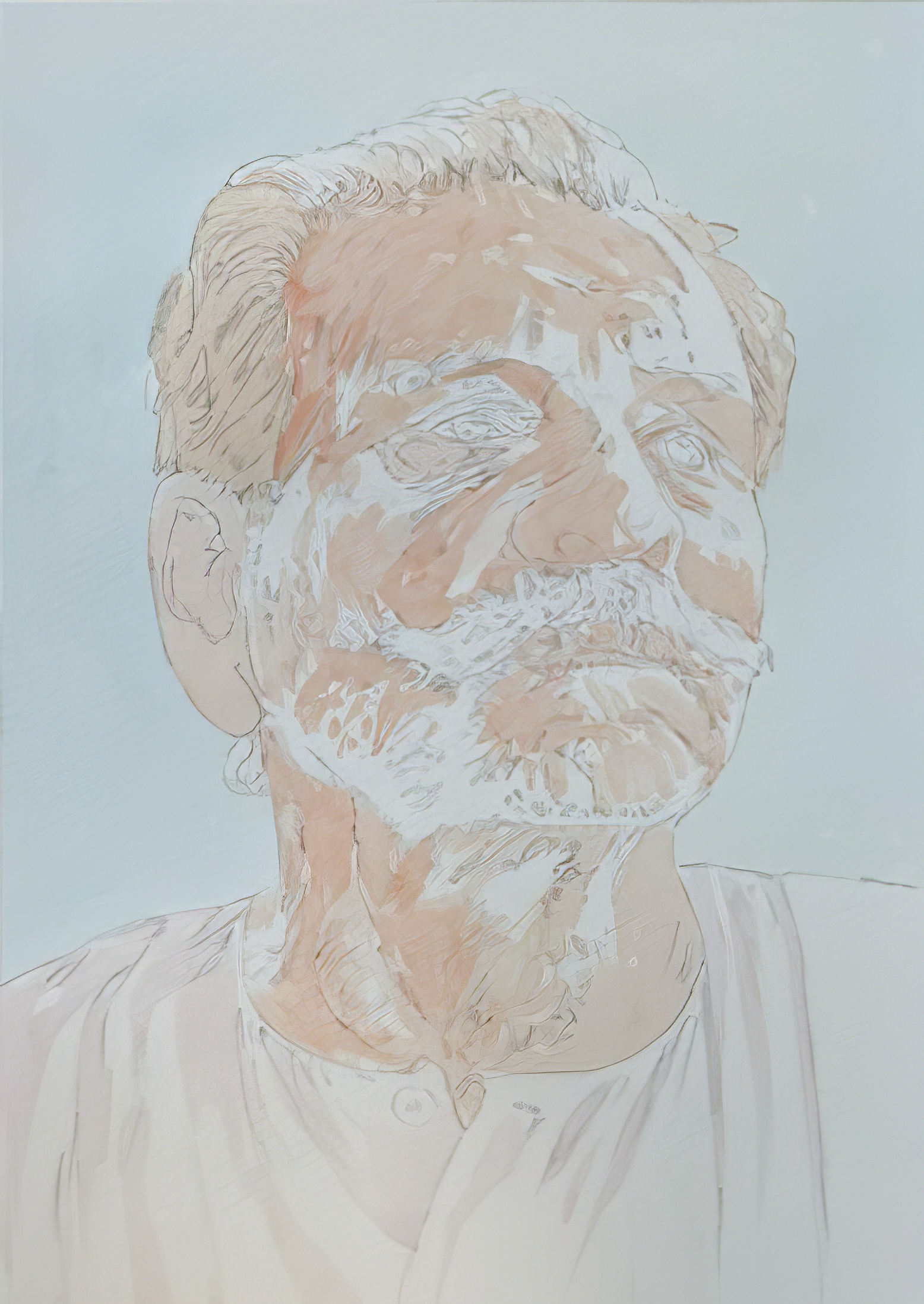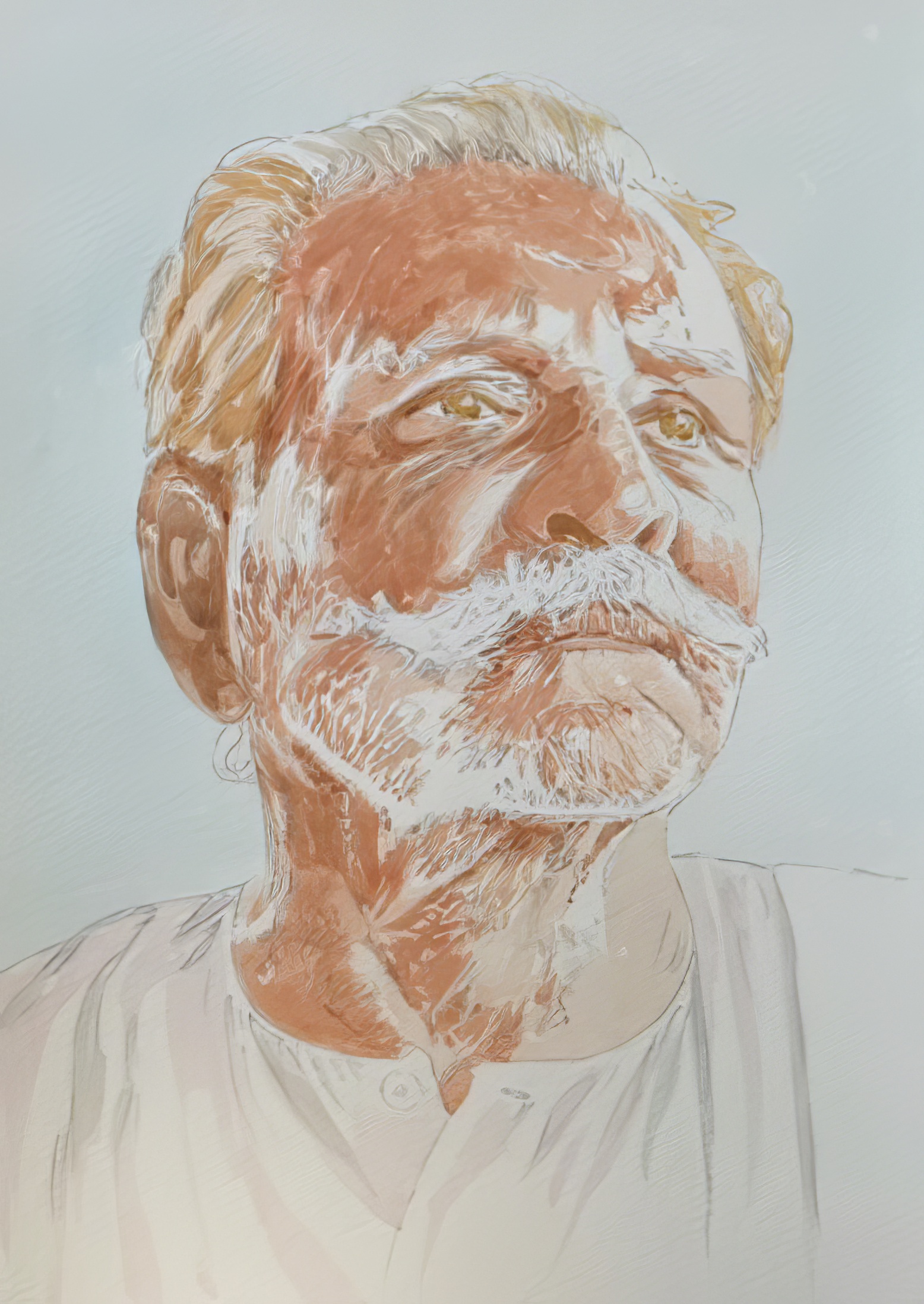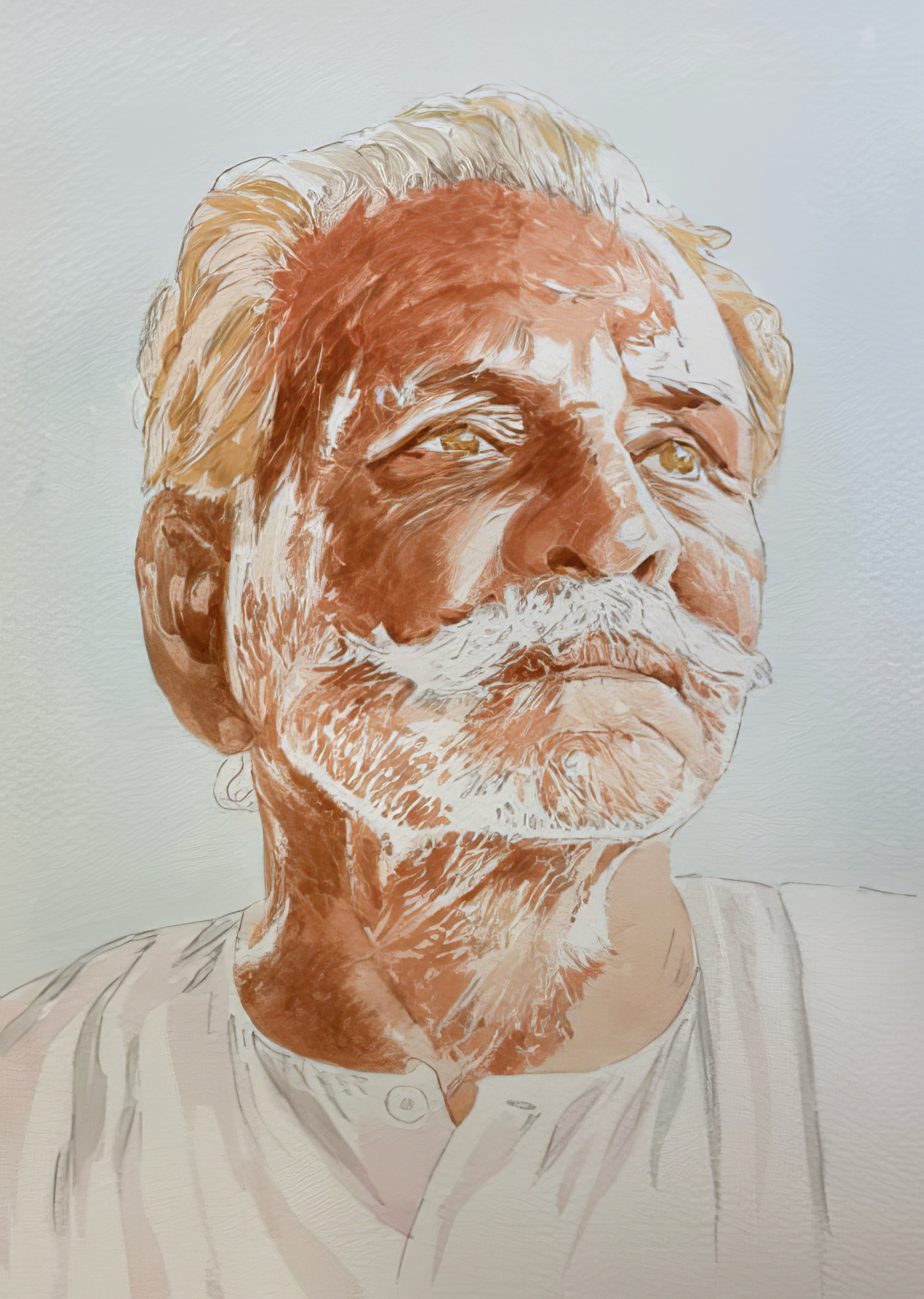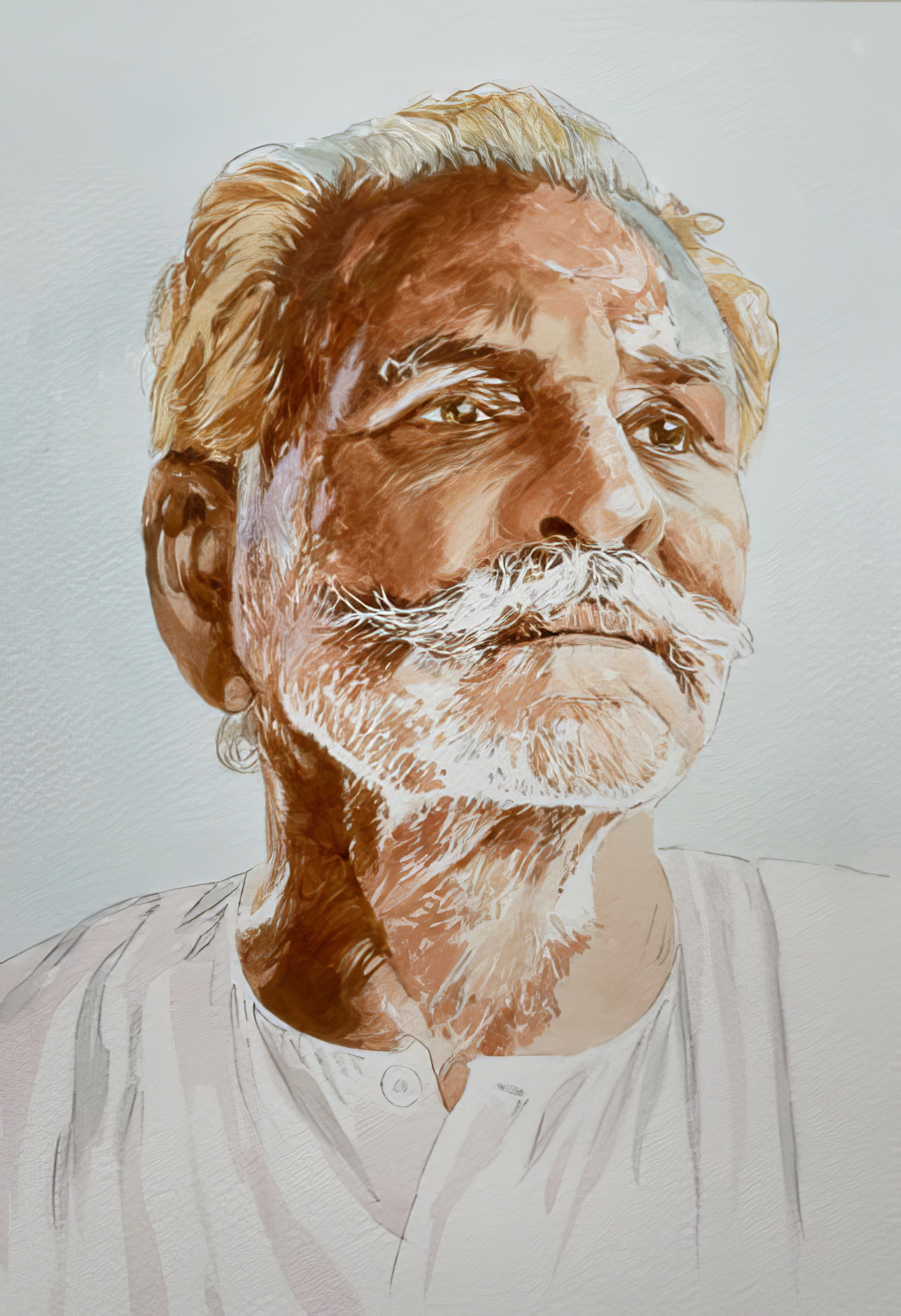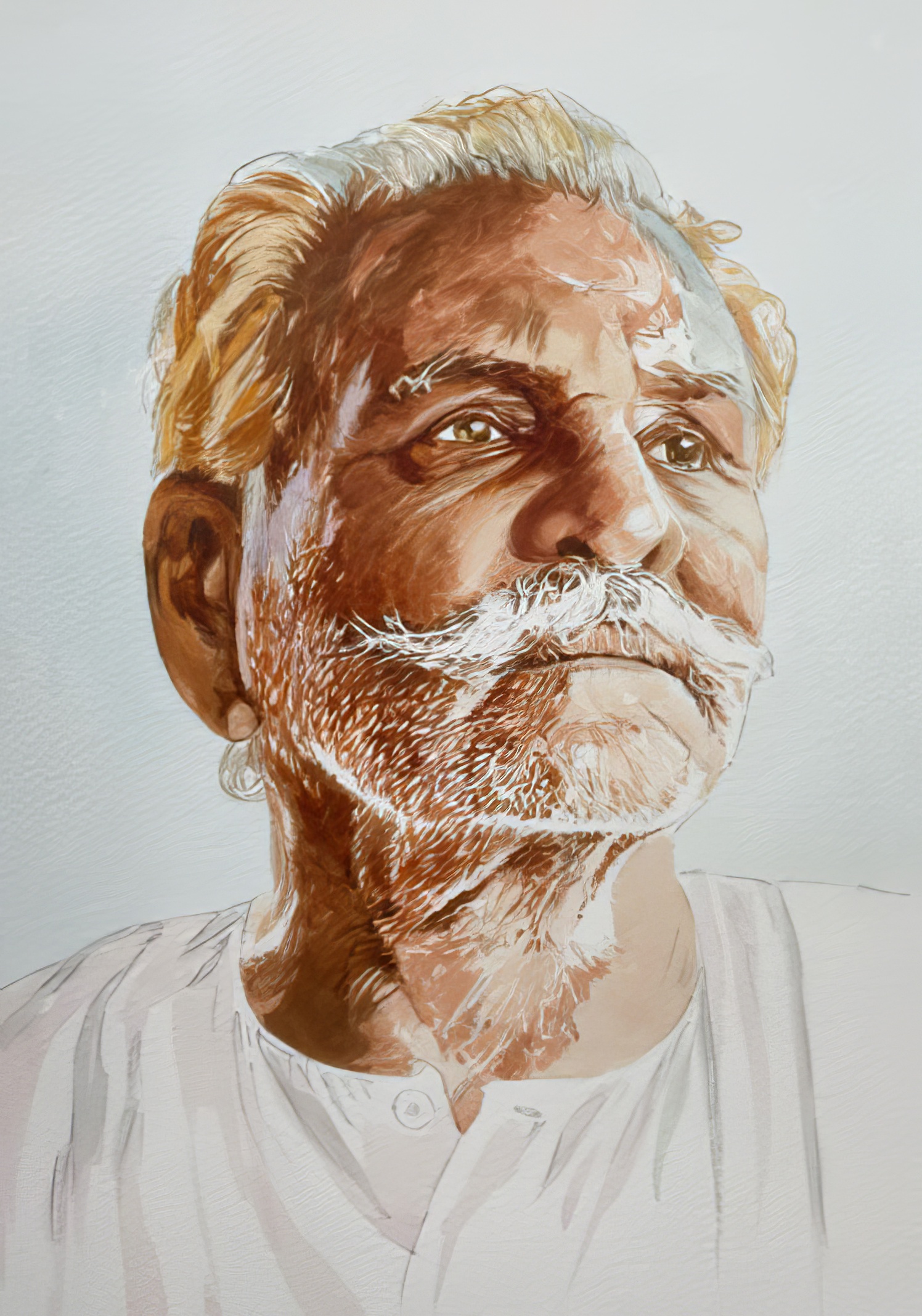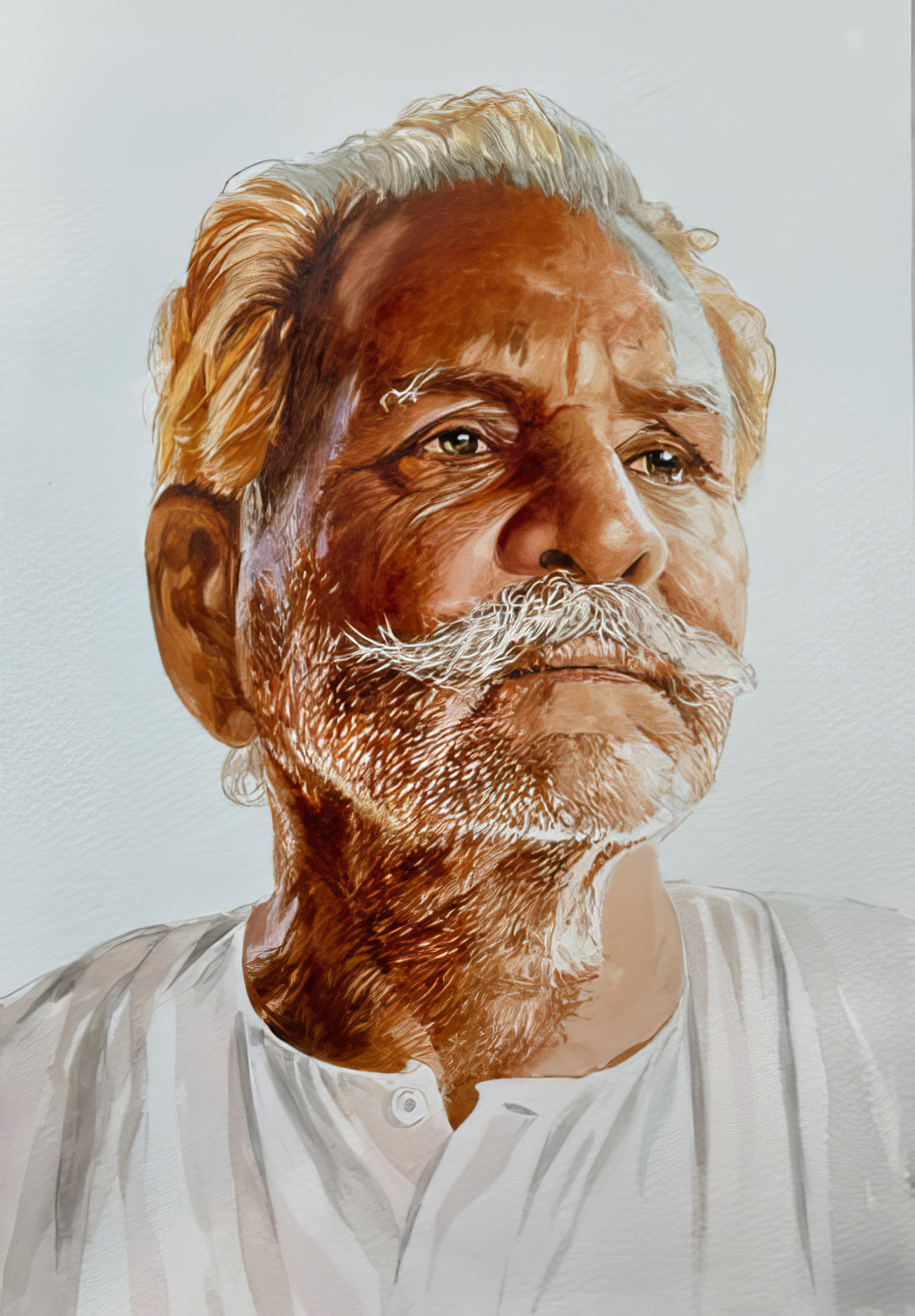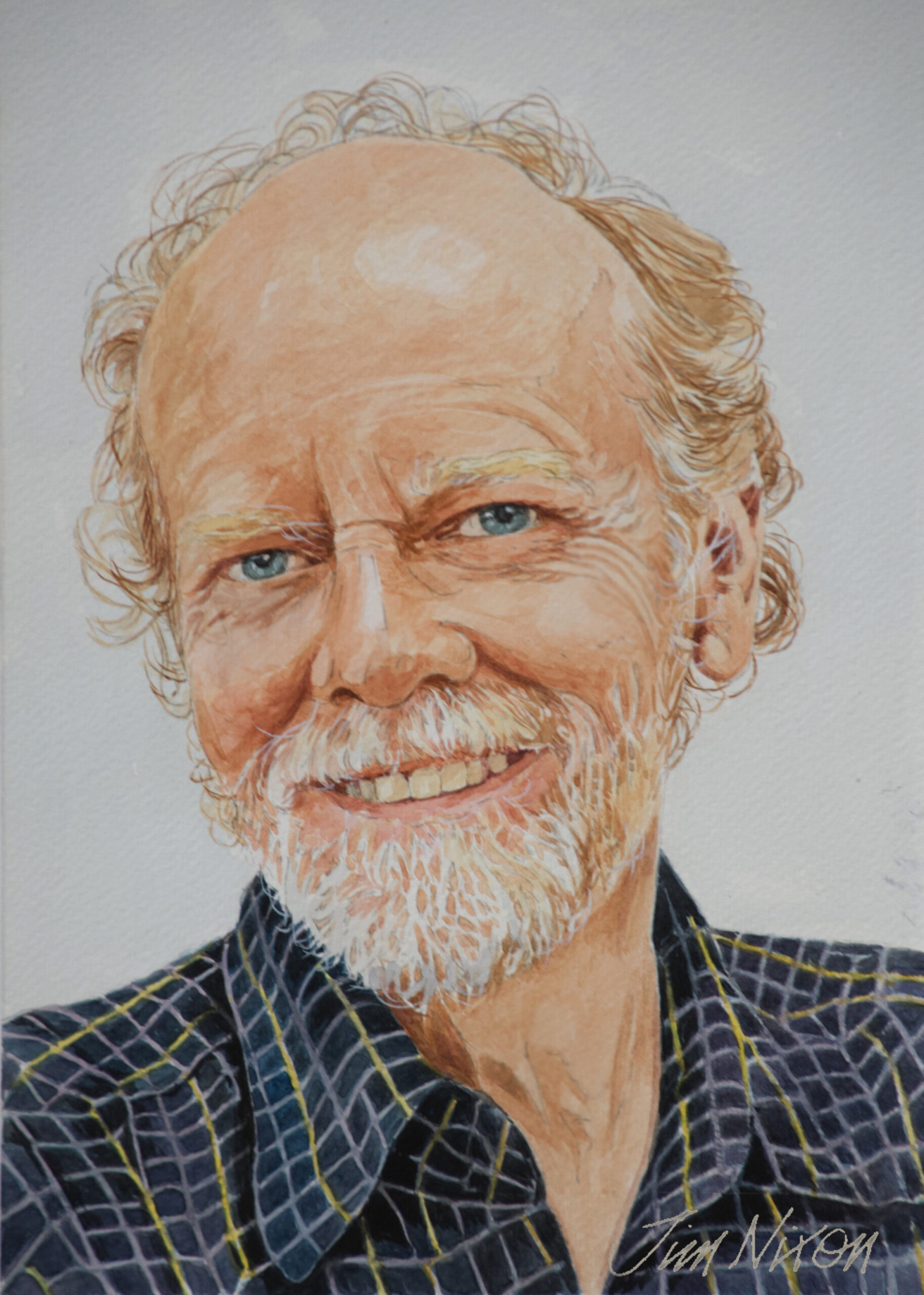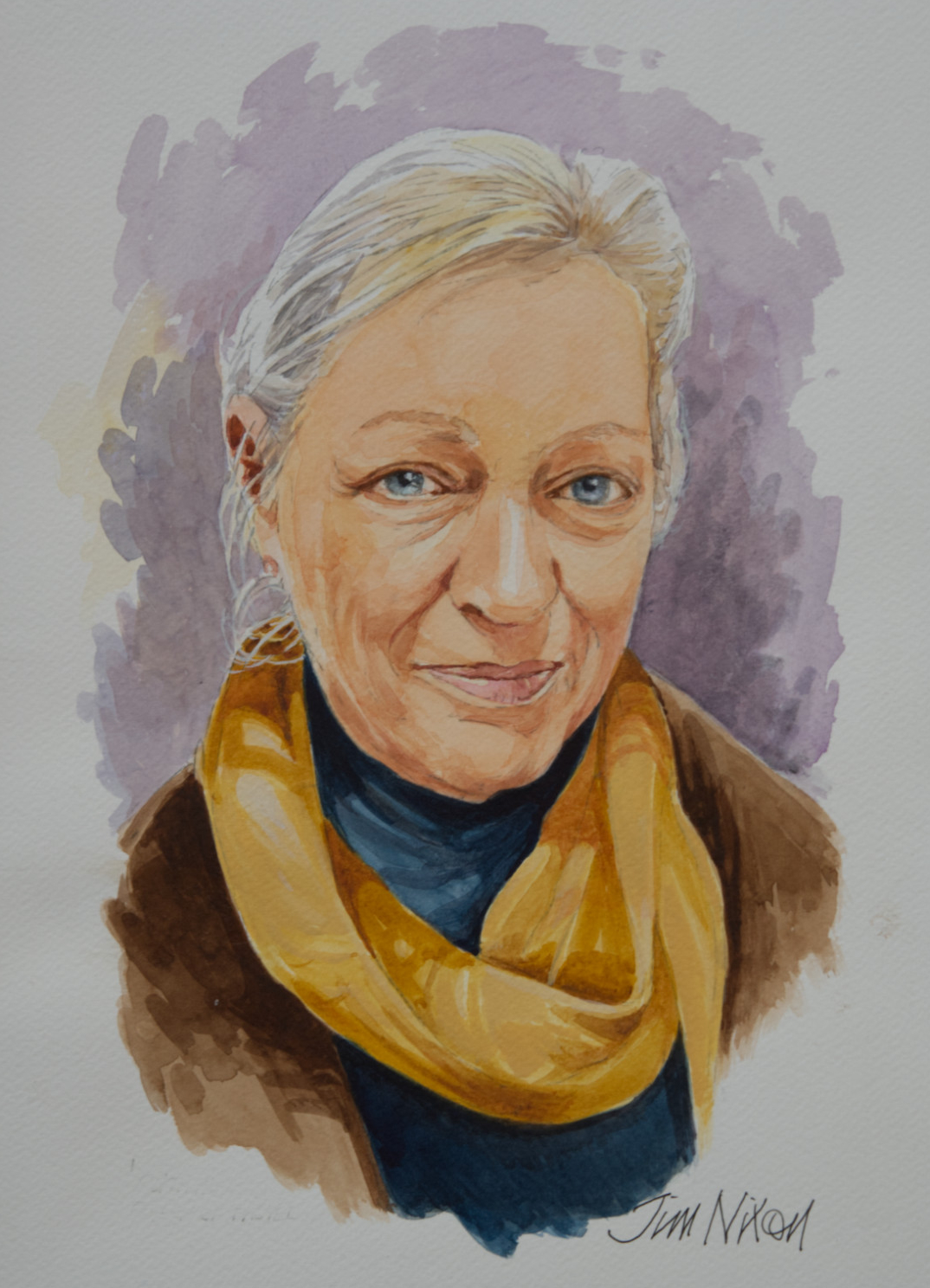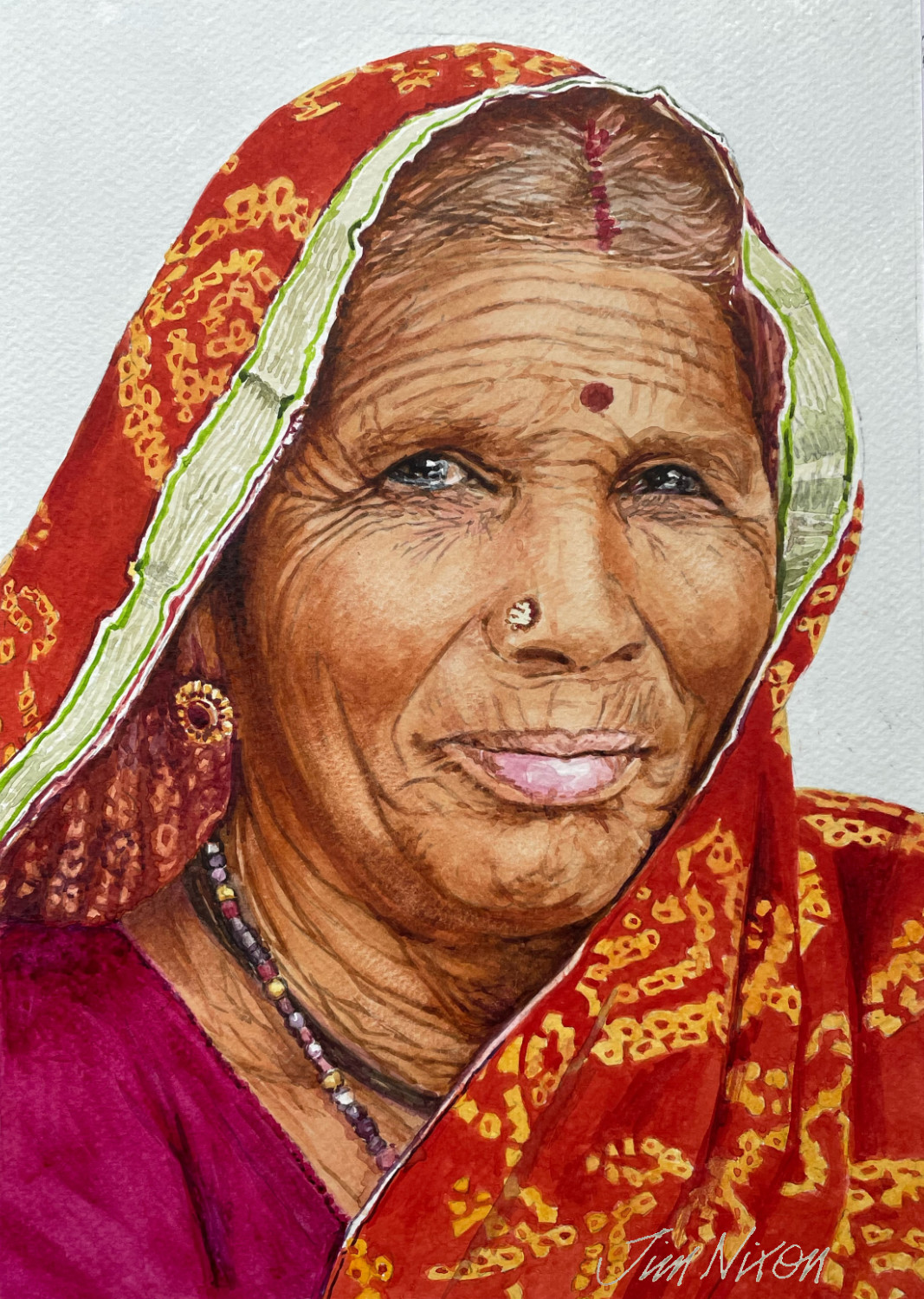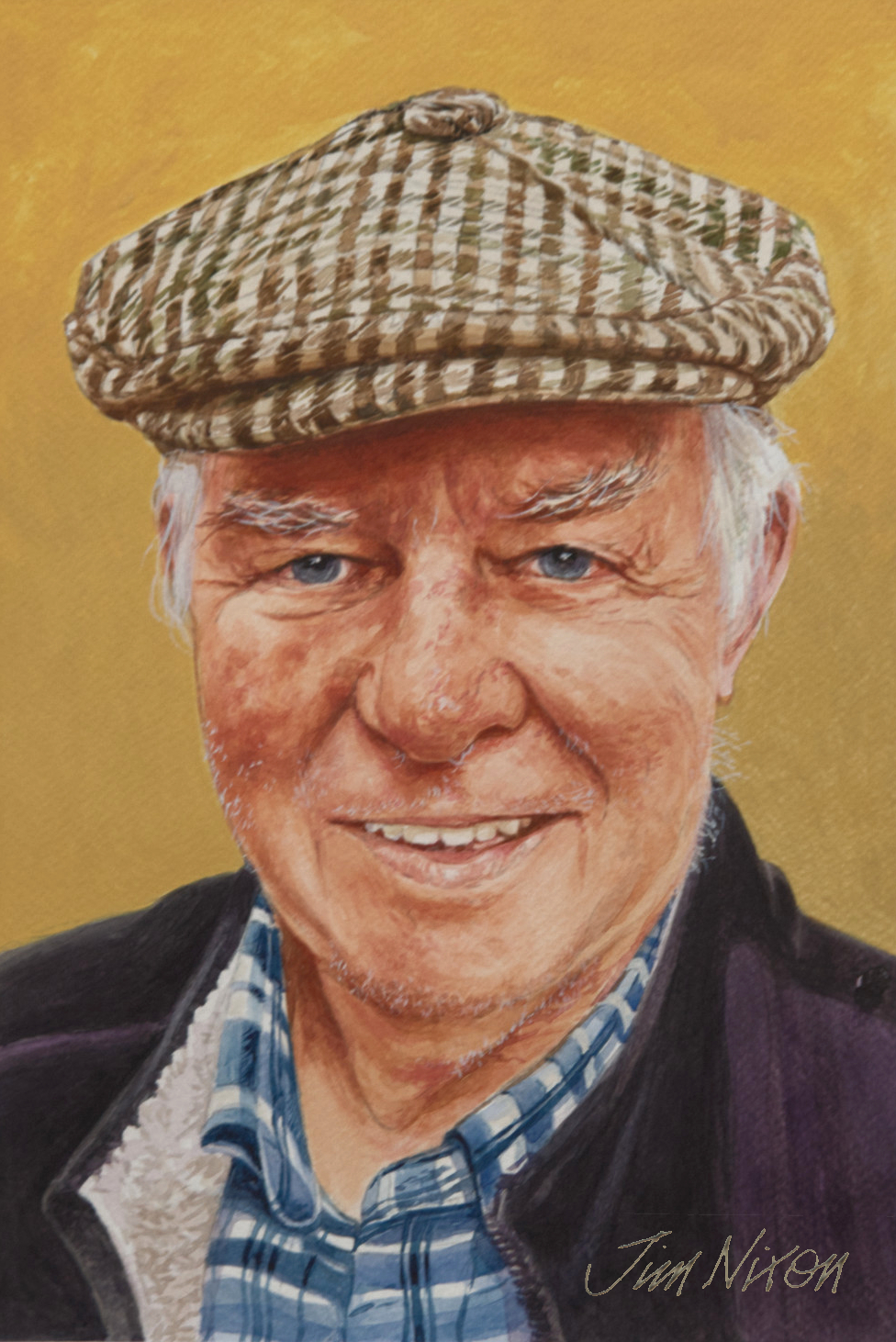General Notes for
Portrait Painting by Jim Nixon
- Start with a good, tight drawing.
- Use very pale base washes for skin tones, hair and clothing.
- Pick out your portrait with a pale background wash. Pale blue, violet, etc. Never bright, hard colours.
- Gradual build up of facial area is very important. Use no hard lines or dark areas. At first use a series of tones on hair and clothes alike.
If you go in too hard you lose the buildup of tone. - Eyes – Make sure they are clear and the right colour. At the very end, use tiny spots or Process White for the highlights.
- Note tiny details in the features. Lines in the corner of the eyes and mouth. Frown lines and laughter lines. Keep detail accurate, again, tonal not dark.
- Your portrait must stay clean and free from any really dark overpainted areas.There is no magic formula… Paint what you see, not what you think you see. Spend time looking at the detail in your subject… don’t guess.
- When you are happy that your work is finished, give the face a wash of very pale colour. This will soften any hard edges you may have left. Do the same with the clothes and hair. Do each area separately with a very pale tone from that area.
Basic Colour Use
Yellow Ochre with CAD Light Red – These colours are the base for most of your skin tone washes. Add tiny amounts of either to darken.
Eye lid lines etc. The tiny dark areas at the corner of the eyes and laughter lines – Add a tiny amount of Maroon to your skin-tone colour. Harder lines add a small amount of Burnt Sienna.The finishing Payoff marks should be small.
It’s often what you leave out that makes your efforts a success.
Jim Nixon
Six stages of completing a painting as shown below:

